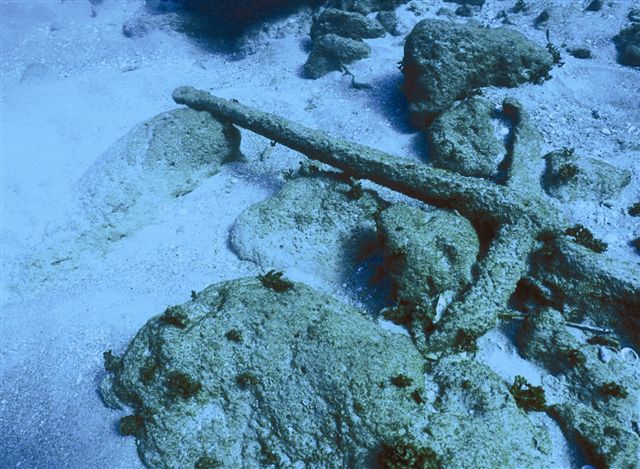On track B the diver will encounter a group of six anchors (13), collected here by the excavators to represent the development of the anchor from ancient to modern times. The anchors were placed on the seafloor in the same way as they were originally designed to function.
I. A stone weight anchor – a one-hole anchor typical of the Bronze Age (5,000-4,000 years ago). Usually, several such anchors were tied along the rope, the distance between them exceeding the depth of the water.
II. A composite stone anchor – a triangular flat stone with three holes. The two lower ones held sticks that stuck in the ground. This type of anchor served from the Bronze Age to the end of the Middle Ages.
III. A composite wooden anchor – the shaft and arms (reconstructed) were made of wood, while the stock and assembling piece are the original lead pieces. The flukes were metal sheathed. It is about 2,000 years old.
IV. An iron anchor – made of wrought iron, similar in shape to the composite wooden anchor. It dates to the Roman period.
V. A large grapnel anchor – an iron anchor with four arms, typical of the medieval period. In use even today by small local boats.
VI. An admiralty anchor – with a round stock and large teeth, in use since the nautical revival of the 14th century AD. It is hardly an improvement on the Roman anchor (IV).
Written by Sarah Arenson







